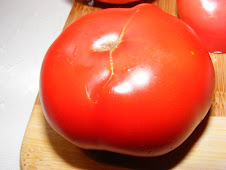How to make it snow…
February 27, 2008 at 9:16 pm (gardening, notes and thoughts, stuff) · Edit
It’s a very basic principle, works the same way as ‘how to make it rain’ - which is of course: hang out your laundry!
In this case, start by getting your pots and starting trays out of the shed, drag out the greenhouse shelves and covers, and just to be really sure, go buy some potting soil and maybe some more seeds. This will work especially well if it is a gorgeous sunny day out, and smells like spring. Nothing like it to bring on another cold snap and a bit of snow!
I’ve got plans to build some low tunnels over my raised beds early this spring, in order to jump start the gardening season. The idea is that they will work as a mini greenhouse, right over the beds. I’m hopeful that I may get growing as much as a month to six weeks early this year, although that is probably pushing it. But perhaps with some cold hardy veggies, I can play outside, while the tomato seedlings are still sunning indoors. I guess we’ll have to see what the spring brings, weather wise, and the summer. I’ve heard rumblings of La Nina, and what she may have to offer us, so all in all, low tunnels are probably a good investment.
I also invested a whole whopping $0.66 in a pack of broccoli seed, and cauliflower seed (part of my ‘how to make it cold and snowy’ campaign). I only mention it because I had absolutely no intention of growing anything but a ton of tomatoes, some carrots, peas, beans, swiss chard, leeks, beets, radishes, onions, lettuce, peppers, zucchini, eggplant, cucumbers, corn, along with various herbs, annuals, and of course babying my brugs. Oh, did I mention tomatoes? A ton? Okay, so that may be a slight exaggeration, I don’t have the room to grow a ton of tomatoes. But I think last count may have been somewhere along the lines of 40 + varieties, which means at least 80 plus plants in my garden, along with all the extras I grow to sell and to give to neighbors and friends. Which always leaves plenty extra for me to harass complete strangers who are unsuspectingly walking down the street introduce new people I meet into the joy of growing tomatoes, and the reasoning behind heirlooms/OP’s.
I think the most fun I have gardening is planning my garden in the winter, and starting the seeds in early spring. Don’t ask me to post a pic of my garden in late July. Unless my darling husband (in case he reads this) decides to pull out all the corn again cause it looks like grass weeds the jungle, it is pretty messy by then. Because I have moved on. Have I every mentioned my astrological sign? I am a Taurus, but Gemini ascending, which translates into ‘I have the attention span of a gnat’. Seriously though, by mid July, garden fatigue, the heat, and the bugs have usually squelched my enthusiasm for my garden. I bounce back by mid to late August, just in time to start harvesting and canning (when it’s +33C??), dehydrating and freezing, and enjoying it again.
A camping vacation comes in handy right around the time garden fatigue has set in, and I don’t spend a moment worrying cause at that point I could care less because I have a fantastic house sitter/gardener/cat feeder, who lives right across the street. She comes complete with younger sisters and a brother, so excellent fall-back house sitters. And I get to spend a week with my family in the woods, swimming and fishing and hiking and stargazing, and I am so happy that I don’t have to answer the phone, or check my email, or listen to bad news on the radio, or fight traffic, and there’s nothing like sitting around a blazing fire at night, with someone you truly enjoy as a person, with whom you share a wicked sense of humor, and the kids are tucked away in their sleeping bags, and you shoot the breeze till the fire starts dying out, and it’s time to for you to tuck in too. That is the ‘ultimate vacation’.
So that’s what’s what for tonight.


